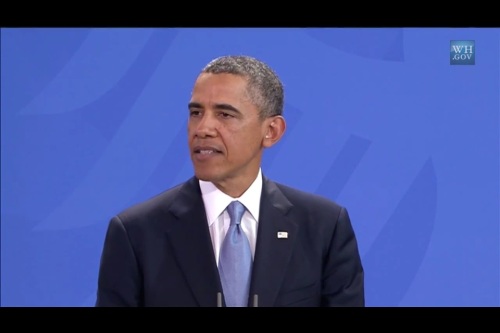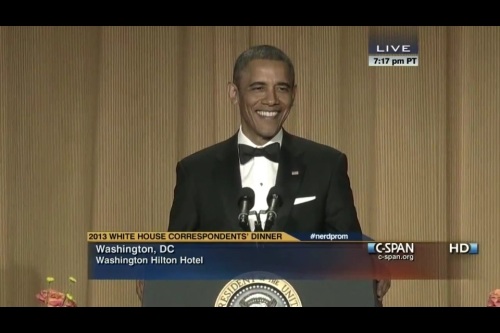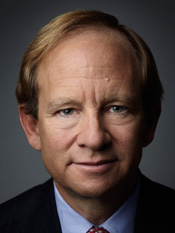The Untold History of the United States: Episode 3, The Bomb
Do you like hearing truth? I mean, do you want to know what is and isn’t even if it’s going to be uncomfortable? Well, if you are like me and you just want to be leveled with I’ve got a video for you. The show “Oliver Stone’s: Untold History of the United States” is automatically uncomfortable/controversial for several reasons, not least of which is the fact that he is considered a pillar in liberal media. Whether that makes listening to him more or less appealing for you it is probably worth at least learning what he has to say. This episode of “Untold History of the United States” is tough for a few reasons, as it calls in to question the intentions of some of our nations leaders during WWII, and the humanity of some of our foreign policies. The greatest question for many that is addressed in this episode will be whether or not we had to drop the atomic bomb on Japan. I would imagine that this is a question that will be debated for a long time, or at least until the Atomic Bomb kills us all (kind of kidding), and feel that anything that is likely to divide us so needs to be stared in the face.
Many people admire President’s Franklin D. Roosevelt and Harry S. Truman, especially people who were alive during their Presidencies. These 2 men however aren’t necessarily as publicly linked to the atomic bomb in the eye of the public as they maybe should be, as “the bomb” is not as popular as they were/are. FDR was the president when the Manhattan Project was developed (which was lead by Robert Oppenheimer, and if you’ve read my favorite book “Outliers” by Malcolm Gladwell you might remember that he tried to kill his professor as a young man…), and Truman made sure that it was not a wasted venture by the United States government. This story is one in particular that I think should be told, and discussed by the public as much as possible. I think that if there is anything that could kill us all, and we get to elect those with the fingers that will be placed on the always spring-loaded trigger we should at least have a conversation about it.
*WARNING: This film is graphic
If you’ve come this far you might as well watch this short clip of people in Honolulu celebrating after the dropping of the bomb.
“VJ Day 1945: The Bravest Generation Celebrates WWII’s End”
To follow up those videos I thought it might be worthwhile to look at some statistics about the bomb and what it actually did.
The Atomic Bombings of Hiroshima and Nagasaki
Total Casualties
There has been great difficulty in estimating the total casualties in the Japanese cities as a result of the atomic bombing. The extensive destruction of civil installations (hospitals, fire and police department, and government agencies) the state of utter confusion immediately following the explosion, as well as the uncertainty regarding the actual population before the bombing, contribute to the difficulty of making estimates of casualties. The Japanese periodic censuses are not complete. Finally, the great fires that raged in each city totally consumed many bodies.
The number of total casualties has been estimated at various times since the bombings with wide discrepancies. The Manhattan Engineer District’s best available figures are:
| Hiroshima | Nagasaki | |
|---|---|---|
| Pre-raid population | 255,000 | 195,000 |
| Dead | 66,000 | 39,000 |
| Injured | 69,000 | 25,000 |
| Total Casualties | 135,000 | 64,000 |
The relation of total casualties to distance from X, the center of damage and point directly under the air-burst explosion of the bomb, is of great importance in evaluating the casualty-producing effect of the bombs. This relationship for the total population of Nagasaki is shown in the table below, based on the first-obtained casualty figures of the District:
| Distance from X, feet |
Killed | Injured | Missing | Total Casualties |
Killed per square mile |
|---|---|---|---|---|---|
| 0 – 1,640 | 7,505 | 960 | 1,127 | 9,592 | 24,7OO |
| 1,640 – 3,300 | 3,688 | 1,478 | 1,799 | 6,965 | 4,040 |
| 3,300 – 4,900 | 8,678 | 17,137 | 3,597 | 29,412 | 5,710 |
| 4,900 – 6,550 | 221 | 11,958 | 28 | 12,207 | 125 |
| 6,550 – 9,850 | 112 | 9,460 | 17 | 9,589 | 20 |
No figure for total pre-raid population at these different distances were available. Such figures would be necessary in order to compute per cent mortality. A calculation made by the British Mission to Japan and based on a preliminary analysis of the study of the Joint Medical-Atomic Bomb Investigating Commission gives the following calculated values for per cent mortality at increasing distances from X:
| Distance from X, in feet |
Percent Mortality |
|---|---|
| 0 – 1000 | 93.0% |
| 1000 – 2000 | 92.0 |
| 2000 – 3000 | 86.0 |
| 3000 – 4000 | 69.0 |
| 4000 – 5000 | 49.0 |
| 5000 – 6000 | 31.5 |
| 6000 – 7000 | 12.5 |
| 7000 – 8000 | 1.3 |
| 8000 – 9000 | 0.5 |
| 9000 – 10,000 | 0.0 |
It seems almost certain from the various reports that the greatest total number of deaths were those occurring immediately after the bombing. The causes of many of the deaths can only be surmised, and of course many persons near the center of explosion suffered fatal injuries from more than one of the bomb effects. The proper order of importance for possible causes of death is: burns, mechanical injury, and gamma radiation. Early estimates by the Japanese are shown in D below:
| Hiroshima | |
|---|---|
| Cause of Death | Percent of Total |
| Burns | 60% |
| Falling debris | 30 |
| Other | 10 |
| Nagasaki | |
|---|---|
| Cause of Death | Percent of Total |
| Burns | 95% |
| Falling debris | 9 |
| Flying glass | 7 |
| Other | 7 |























